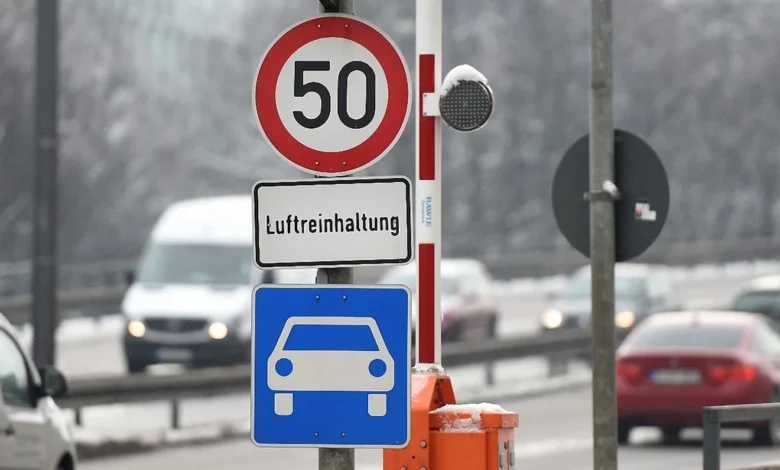Key differences in the rules of the road in EU countries: what Ukrainian refugees should know about

For Ukrainian refugees who have found themselves abroad due to the war and are planning to travel through Europe, it is important to be aware of the key differences in road traffic rules (TDR). Ignorance of local regulations can lead to fines, unpleasant situations or even legal consequences. This article will help you understand the peculiarities of European traffic laws and avoid mistakes while traveling.
Speed limit
In Ukraine, speed limits are set as follows:
- 50 km/h in populated areas;
- 90 km/h outside populated areas;
- 110 km/h on roads for cars;
- 130 km/h on highways.
At the same time, in some cities, especially near schools, hospitals or pedestrian areas, there may be additional restrictions.
In Europe, speed regulations vary by country. For example, in Poland:
- 50 km/h in populated areas;
- 90 km/h outside populated areas;
- 120 km/h on expressways;
- 140 km/h on highways.
In France, Germany or Austria, the speed regime may change depending on the weather conditions. On a wet road, the limits are often reduced, which should be taken into account during trips.
Using low beam headlights
In Ukraine, low beam headlights are mandatory from October 1 to May 1 outside populated areas. This is due to the short daylight hours and the need to improve visibility on the roads.
In Europe, the requirements may be stricter. In Poland, Sweden and Norway, low beam headlights must be on all year round. In Germany or France, this is mandatory only in conditions of limited visibility.
Permissible blood alcohol level
In Ukraine, the permissible level of alcohol in the blood is 0.2 ppm. Exceeding this indicator is punishable by fines, deprivation of rights, and in some cases – administrative arrest.
In Europe, the situation is different:
- Poland – 0.2 ppm;
- Germany – 0.5 ppm, but for beginners (experience less than 2 years) – 0.0 ppm;
- The Czech Republic and Hungary have a complete ban (0.0 ppm).
At the same time, the fines in Europe are much stricter, and you should carefully familiarize yourself with the rules before traveling.
Pedestrian priority
In Ukraine, drivers are obliged to give way to pedestrians at crosswalks, but they do not always follow this rule. In Europe, particularly in Poland or France, pedestrians have absolute priority even when approaching a crossing. Drivers must stop in advance after noticing a person about to cross the road.
Using mobile phones while driving
In Ukraine, it is forbidden to use a mobile phone while driving without a special headset. Fines for violations can amount to several thousand hryvnias.
Similar rules apply in Europe, but the fines are much higher. In Germany, the fine is 100 euros, and in France – more than 130 euros.
Other important differences in EU and Ukrainian traffic laws
Reflective vest. In most EU countries (France, Italy, Spain), the presence of a reflective vest in the vehicle is mandatory. The driver must wear it if he gets out of the car on the road in the event of a stop. There is no such requirement in Ukraine.
Circular motion. In Europe, especially in France, Spain or Germany, circular traffic has priority. In Ukraine, it depends on the priority signs, so the rules can change from intersection to intersection.
Tire requirements. In some European countries (Germany, Austria) the use of winter tires is mandatory in winter, while in Ukraine it is only a recommendation.
Requirements for the first aid kit. In many EU countries, the contents of the car first aid kit are treated strictly, and its composition is checked for compliance with standards. In Ukraine, there is also mandatory equipment, but the requirements are not so strict.
Emergency stop sign. In Ukraine, it is enough to have one emergency stop sign, while in some EU countries (for example, in Spain) you need to have two.
Insurance. In the EU, a civil liability policy is mandatory, and a “Green Card” is required for travel between countries. In Ukraine, insurance is not mandatory, but it is recommended to take out at least a basic policy. In order to avoid unforeseen expenses, it is worth considering the possibility of issuing Mini CASCO, which will provide additional protection of the vehicle during the trip.
Knowing these rules will help you avoid fines, ensure a safe trip and stay calm during the trip.
Tips for a safe trip
- Familiarize yourself with the traffic laws of the country to which you are going.
- Check the need for a “Green Card” for a car.
- Make sure you have all the necessary documents.
- Follow the speed limit and light rules.
- Ensure the presence of an emergency sign, a first aid kit and a fire extinguisher.
Knowing and following traffic rules will ensure not only safety on the road, but also peace of mind during the trip. Be responsible drivers and take care of your safety in advance!





